- Home
- Joyce Carol Oates
On Boxing
On Boxing Read online
Joyce Carol Oates
ON BOXING
With photographs by John Ranard
For the contenders…
CONTENTS
PREFACE
ON BOXING
ON MIKE TYSON
THE CRUELEST SPORT
MUHAMMAD ALI: THE GREATEST
IN THE RING AND OUT
THE AVENGER
ACKNOWLEDGMENTS
ABOUT THE AUTHOR
OTHER BOOKS BY JOYCE CAROL OATES
COPYRIGHT
ABOUT THE PUBLISHER
PREFACE
No other subject is, for the writer, so intensely personal as boxing. To write about boxing is to write about oneself—however elliptically, and unintentionally. And to write about boxing is to be forced to contemplate not only boxing, but the perimeters of civilization—what it is, or should be, to be “human.”
When I was writing On Boxing, in the grip of a curious, inexplicable compulsion, from February 1985 (when I drafted a short story titled “Golden Gloves”—I never understood why) to spring 1987, it happened that I was riding the crest, without knowing it, of a triumphant era in this turbulent and always precarious American “sport.” The great, inimitable Muhammad Ali had retired, but Larry Holmes was an estimable, intrepid heavyweight champion. Marvin Hagler was a brilliant middleweight champion. The ingenious Sugar Ray Leonard, recently retired, was due soon to return—with unexpectedly spectacular results. There was Michael Spinks, there was Thomas Hearns, there was the buttery-smooth and seemingly invincible Donald Curry. There was, seemingly forever, Roberto Duran. There was the beloved Irish featherweight champion Barry McGuigan. And a Cus D’Amato-trained young man named Mike Tyson, whose first professional fight was in March 1985, was rapidly ascending the ranks of the heavyweight division by knock-outs. Like the legendary Harry Greb, Tyson seemed to be training by fighting, every two or three weeks, indefatigably. Tyson’s career was so meteoric, and so self-consuming, that it has seemed as much moral ex-emplum as sports history: beginning in public glory, ending in public shame. (If, in fact, Tyson’s career, after his conviction on charges of rape in February 1992, has ended.)
Much has changed in boxing since that time, though it has been hardly a decade. Virtually all of the reigning boxers have disappeared. The enormous purses of the 1980’s—the theme of an entire chapter of On Boxing—have been multiplied tenfold for heavyweight title fights. The sport seems in crisis, its best practitioners no less than its most dubious contaminated by association with fixed fights, manipulated judges, questionable referees. Demands for its abolition are made, indignation is aroused, well-argued editorials are printed, deals continue to be made, boxers continue to be “managed.” Occasionally there is a boxing match that, in its demonstration of skill, courage, intelligence, hope, seems to redeem the sport—or almost. Perhaps boxing has always been in crisis, a sport of crisis.
Without doubt, it is our most dramatically “masculine” sport, and our most dramatically “self-destructive” sport. In this, for some of us, its abiding interest lies.
JANUARY 1994
ON BOXING
It’s a terrible sport, but it’s a sport…the fight for survival is the fight.
—ROCKY GRAZIANO,
former middleweight champion of the world
They are young welterweight boxers so evenly matched they might be twins, though one has a redhead’s pallor and the other is a dusky-skinned Hispanic. Circling each other in the ring, beneath the glaring lights, trying jabs, tentative left hooks, right crosses that dissolve in mid-air or turn into harmless slaps. How to get inside! How to press an advantage, score a point or two, land a single punch! It seems they have forgotten all they’ve been trained to do and the Madison Square Garden fight crowd is getting noisy, derisive, impatient. Time is running out. “Those two—what’d they do, wake up this morning and decide they were boxers?” a man behind me says in disgust. (He’s dark, nattily dressed, neat-trimmed moustache and tinted glasses. A sophisticated fight fan. Knows all the answers. Two hours later he will be screaming, “Tommy! Tommy! Tommy!” over and over in a paroxysm of grief as, on the giant closed-circuit television screen lowered over the ring, middleweight champion Marvelous Marvin Hagler batters his brash challenger Thomas Hearns into insensibility.)
The young welterweights are surely conscious of the chorus of jeers, boos, and catcalls in this great cavernous space reaching up into the cheap twenty-dollar seats in the balconies amid the constant milling of people in the aisles, the commingled smells of hotdogs, beer, cigarette and cigar smoke, hair oil. But they are locked desperately together in their futile match—circling, “dancing,” jabbing, slapping, clinching—now a flurry of light blows, clumsy footwork, yet another sweaty stumbling despairing clinch into the ropes that provokes a fresh wave of derision as the referee helps them apart. Why are they here in the Garden of all places, each fighting, it seems, his first professional fight? Neither wants to hurt the other—neither is angry at the other. When the bell sounds at the end of the fourth and final round the crowd boos a little louder. The Hispanic boy, silky yellow shorts, damp frizzy floating hair, strides about his corner of the ring with his gloved hand aloft—not in defiance of the boos which increase in response to his gesture, or even in acknowledgment of them. It’s just something he’s doing, something he has seen older boxers do, he’s saying I’m, here, I made it, I did it.
When the decision is announced as a draw the crowd’s derision increases in volume. “Get out of the ring!” “Assholes!” “Go home!” Contemptuous male laughter follows the boys up the aisle in their robes, towels about their heads, sweating, breathless. Why had they thought they were boxers?
How can you enjoy so brutal a sport, people sometimes ask me.
Or pointedly don’t ask.
And it’s too complex to answer. In any case I don’t “enjoy” boxing in the usual sense of the word, and never have; boxing isn’t invariably “brutal”; and I don’t think of it as a “sport.”
Nor can I think of boxing in writerly terms as a metaphor for something else. No one whose interest began as mine did in childhood—as an offshoot of my father’s interest—is likely to think of boxing as a symbol of something beyond itself, as if its uniqueness were merely an abbreviation, or iconographic; though I can entertain the proposition that life is a metaphor for boxing—for one of those bouts that go on and on, round following round, jabs, missed punches, clinches, nothing determined, again the bell and again and you and your opponent so evenly matched it’s impossible not to see that your opponent is you: and why this struggle on an elevated platform enclosed by ropes as in a pen beneath hot crude pitiless lights in the presence of an impatient crowd?—that sort of hellish-writerly metaphor. Life is like boxing in many unsettling respects. But boxing is only like boxing.
For if you have seen five hundred boxing matches you have seen five hundred boxing matches and their common denominator, which certainly exists, is not of primary interest to you. “If the Host is only a symbol,” as the Catholic writer Flannery O’Connor once remarked, “I’d say the hell with it.”
I am a fighter who walks, talks, and thinks fighting, but I try not to look like it.
—MARVELOUS MARVIN HAGLER, middleweight champion of the world
Like a dancer, a boxer “is” his body, and is totally identified with it. And the body is identified with a certain weight:
HEAVYWEIGHT—no weight limit
CRUISERWEIGHT—not over 195 pounds
LIGHT HEAVYWEIGHT—not over 175 pounds
MIDDLEWEIGHT—not over 160 pounds
JUNIOR MIDDLEWEIGHT—not over 154 pounds
WELTERWEIGHT—not over 147 pounds
JUNIOR WELTERWEIGHT—not over 140 pounds
LIGHTWEIGHT�
��not over 135 pounds
JUNIOR LIGHTWEIGHT—not over 130 pounds
FEATHERWEIGHT—not over 126 pounds
JUNIOR FEATHERWEIGHT—not over 122 pounds
BANTAMWEIGHT—not over 118 pounds
FLYWEIGHT—not over 112 pounds
Though the old truism “A good big man will always beat a good little man” has been disproved any number of times (most recently by Michael Spinks in his victory over Larry Holmes) it is usually the case that a boxer invites disaster by fighting out of his weight division: he can “move up” but very likely he can’t “bring his punch with him.” Where at one time the distinctions between weight were fairly crude (paralleling life’s unfairness—the mismatches of most battles outside the ring) boxing promoters and commissions have created a truly Byzantine hierarchy of weights to regulate present-day fights. In theory, the finely calibrated divisions were created to prevent mismatches; in practice, they have the felicitous effect of creating many more “champions” and many more lucrative “title” shots. So it is, an ambitious boxer in our time hopes not only to be a champion but to be a great champion—an immortal; he may try for multiple titles, like Sugar Ray Robinson (world welter- and middleweight champion who tried, and failed, to win the light-heavyweight title from Joey Maxim), Sugar Ray Leonard (world welter- and junior-middleweight champion), Roberto Dur´n (world light-, welter- and light-middleweight champion who tried, and failed, to move up to middleweight), Alexis Arguello (world featherweight, junior lightweight, and lightweight champion who hoped for a junior welterweight title before his recent retirement).
In order to make his weight the boxer may resort to fasting or vigorous exercise so close to fight time that he risks serious injury: like, most recently, WBA bantamweight champion Richie Sandoval who lost ten pounds in a short period of time and, in his match with Gaby Canizales in March 1986, nearly lost his life as a consequence. When Michael Spinks made boxing history in September 1985 by becoming the first light-heavyweight to win the heavyweight title, as much excited media attention was paid to Spinks’s body as to his boxing. For Spinks had accomplished what constituted a tour de force of the physical—with the help of his trainer and nutritionist he had created for himself a true heavyweight’s body: two hundred pounds of solid muscle. And though his opponent Larry Holmes outweighed him by twenty-odd pounds it scarcely mattered since Spinks had not merely gained weight, he had become a “new” body. And he sustained this remarkable new body for his title defense against Holmes, which he also won. Boxing’s fanaticism can go no further.
Why are you a boxer, Irish featherweight champion Barry McGuigan was asked. He said: “I can’t be a poet. I can’t tell stories…”
Each boxing match is a story—a unique and highly condensed drama without words. Even when nothing sensational happens: then the drama is “merely” psychological. Boxers are there to establish an absolute experience, a public accounting of the outermost limits of their beings; they will know, as few of us can know of ourselves, what physical and psychic power they possess—of how much, or how little, they are capable. To enter the ring near-naked and to risk one’s life is to make of one’s audience voyeurs of a kind: boxing is so intimate. It is to ease out of sanity’s consciousness and into another, difficult to name. It is to risk, and sometimes to realize, the agony of which agon (Greek, “contest”) is the root.
In the boxing ring there are two principal players, overseen by a shadowy third. The ceremonial ringing of the bell is a summoning to full wakefulness for both boxers and spectators. It sets into motion, too, the authority of Time.
The boxers will bring to the fight everything that is themselves, and everything will be exposed—including secrets about themselves they cannot fully realize. The physical self, the maleness, one might say, underlying the “self.” There are boxers possessed of such remarkable intuition, such uncanny prescience, one would think they were somehow recalling their fights, not fighting them as we watch. There are boxers who perform skillfully, but mechanically, who cannot improvise in response to another’s alteration of strategy; there are boxers performing at the peak of their talent who come to realize, mid-fight, that it will not be enough; there are boxers—including great champions—whose careers end abruptly, and irrevocably, as we watch. There has been at least one boxer possessed of an extraordinary and disquieting awareness not only of his opponent’s every move and anticipated move but of the audience’s keenest shifts in mood as well, for which he seems to have felt personally responsible—Cassius Clay / Muhammad Ali, of course. “The Sweet Science of Bruising” celebrates the physicality of men even as it dramatizes the limitations, sometimes tragic, more often poignant, of the physical. Though male spectators identify with boxers no boxer behaves like a “normal” man when he is in the ring and no combination of blows is “natural.” All is style.
Every talent must unfold itself in fighting. So Nietzsche speaks of the Hellenic past, the history of the “contest”—athletic, and otherwise—by which Greek youths were educated into Greek citizenry. Without the ferocity of competition, without, even, “envy, jealousy, and ambition” in the contest, the Hellenic city, like the Hellenic man, degenerated. If death is a risk, death is also the prize—for the winning athlete.
In the boxing ring, even in our greatly humanized times, death is always a possibility—which is why some of us prefer to watch films or tapes of fights already past, already defined as history. Or, in some instances, art. (Though to prepare for writing this mosaic-like essay I saw tapes of two infamous “death” fights of recent times: the Lupe Pintor-Johnny Owen bantamweight match of 1982, and the Ray Mancini-Duk Koo-Kim lightweight match of the same year. In both instances the boxers died as a consequence of their astonishing resilience and apparent indefatigability—their “heart,” as it’s known in boxing circles.) Most of the time, however, death in the ring is extremely unlikely; a statistically rare possibility like your possible death tomorrow morning in an automobile accident or in next month’s headlined airline disaster or in a freak accident involving a fall on the stairs or in the bathtub, a skull fracture, subarachnoid hemorrhage. Spectators at “death” fights often claim afterward that what happened simply seemed to happen—unpredictably, in a sense accidentally. Only in retrospect does death appear to have been inevitable.
If a boxing match is a story it is an always wayward story, one in which anything can happen. And in a matter of seconds. Split seconds! (Muhammad Ali boasted that he could throw a punch faster than the eye could follow, and he may have been right.) In no other sport can so much take place in so brief a period of time, and so irrevocably.
Because a boxing match is a story without words, this doesn’t mean that it has no text or no language, that it is somehow “brute,” “primitive,” “inarticulate,” only that the text is improvised in action; the language a dialogue between the boxers of the most refined sort (one might say, as much neurological as psychological: a dialogue of split-second reflexes) in a joint response to the mysterious will of the audience which is always that the fight be a worthy one so that the crude paraphernalia of the setting—ring, lights, ropes, stained canvas, the staring onlookers themselves—be erased, forgotten. (As in the theater or the church, settings are erased by way, ideally, of transcendent action.) Ringside announcers give to the wordless spectacle a narrative unity, yet boxing as performance is more clearly akin to dance or music than narrative.
To turn from an ordinary preliminary match to a “Fight of the Century” like those between Joe Louis and Billy Conn, Joe Frazier and Muhammad Ali, Marvin Hagler and Thomas Hearns is to turn from listening or half-listening to a guitar being idly plucked to hearing Bach’s Well-Tempered Clavier perfectly executed, and that too is part of the story’s mystery: so much happens so swiftly and with such heart-stopping subtlety you cannot absorb it except to know that something profound is happening and it is happening in a place beyond words.
I try to catch my opponent on the tip of his nose because I tr
y to punch the bone into his brain.
—MIKE TYSON,
Boxing’s claim is that it is superior to life in that it is, ideally, superior to all accident. It contains nothing that is not fully willed.
The boxer meets an opponent who is a dream-distortion of himself in the sense that his weaknesses, his capacity to fail and to be seriously hurt, his intellectual miscalculations—all can be interpreted as strengths belonging to the Other; the parameters of his private being are nothing less than boundless assertions of the Other’s self. This is dream, or nightmare: my strengths are not fully my own, but my opponent’s weaknesses; my failure is not fully my own, but my opponent’s triumph. He is my shadow-self, not my (mere) shadow. The boxing match as “serious, complete, and of a certain magnitude”—to refer to Aristotle’s definition of tragedy—is an event that necessarily subsumes both boxers, as any ceremony subsumes its participants. (Which is why one can say, for instance, that the greatest fight of Muhammad Ali’s career was one of the few fights Ali lost—the first heroic match with Frazier.)
The old boxing adage—a truism surely untrue—that you cannot be knocked out if you see the blow coming, and if you will yourself not to be knocked out, has its subtler, more daunting significance: nothing that happens to the boxer in the ring, including death—“his” death—is not of his own will or failure of will. The suggestion is of a world-model in which we are humanly responsible not only for our own acts but for those performed against us.
Which is why, though springing from life, boxing is not a metaphor for life but a unique, closed, self-referential world, obliquely akin to those severe religions in which the individual is both “free” and “determined”—in one sense possessed of a will tantamount to God’s, in another totally helpless. The Puritan sensibility would have understood a mouth filling with blood, an eye popped out of its socket—fit punishment for an instant’s negligence.

 Starr Bright Will Be With You Soon
Starr Bright Will Be With You Soon My Heart Laid Bare
My Heart Laid Bare A Fair Maiden
A Fair Maiden The Doll-Master and Other Tales of Terror
The Doll-Master and Other Tales of Terror Wild Nights!: Stories About the Last Days of Poe, Dickinson, Twain, James, and Hemingway
Wild Nights!: Stories About the Last Days of Poe, Dickinson, Twain, James, and Hemingway Two or Three Things I Forgot to Tell You
Two or Three Things I Forgot to Tell You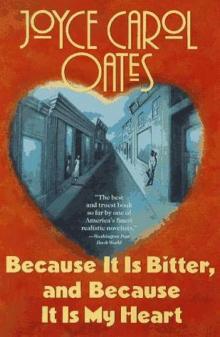 Because It Is Bitter, and Because It Is My Heart
Because It Is Bitter, and Because It Is My Heart Missing Mom: A Novel
Missing Mom: A Novel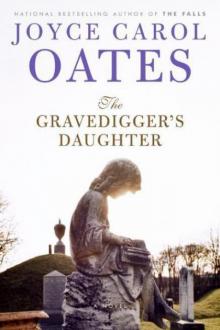 The Gravedigger's Daughter: A Novel
The Gravedigger's Daughter: A Novel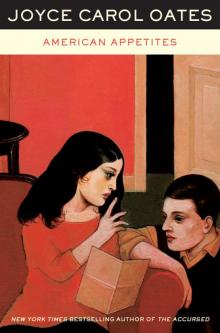 American Appetites
American Appetites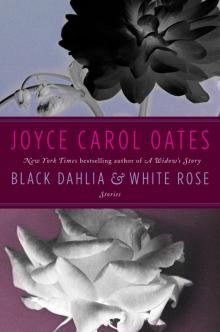 Black Dahlia White Rose: Stories
Black Dahlia White Rose: Stories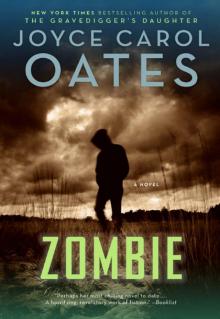 Zombie
Zombie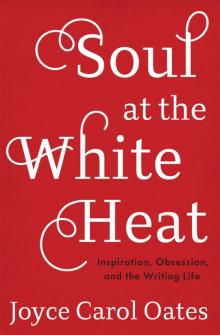 Soul at the White Heat: Inspiration, Obsession, and the Writing Life
Soul at the White Heat: Inspiration, Obsession, and the Writing Life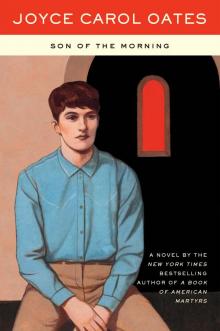 Son of the Morning
Son of the Morning Patricide
Patricide Snake Eyes
Snake Eyes Wonderland
Wonderland In Rough Country: Essays and Reviews
In Rough Country: Essays and Reviews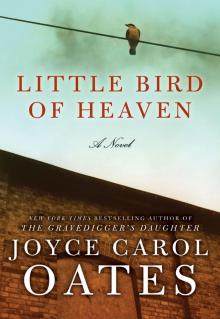 Little Bird of Heaven
Little Bird of Heaven The Haunting
The Haunting The Accursed
The Accursed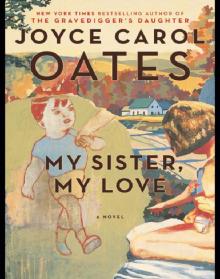 My Sister, My Love: The Intimate Story of Skyler Rampike
My Sister, My Love: The Intimate Story of Skyler Rampike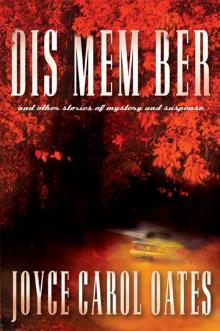 Dis Mem Ber and Other Stories of Mystery and Suspense
Dis Mem Ber and Other Stories of Mystery and Suspense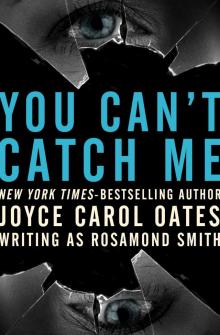 You Can't Catch Me
You Can't Catch Me Daddy Love: A Novel
Daddy Love: A Novel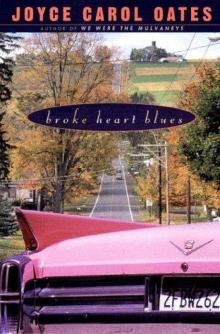 Broke Heart Blues
Broke Heart Blues I'll Take You There
I'll Take You There Mystery, Inc.
Mystery, Inc. We Were The Mulvaneys
We Were The Mulvaneys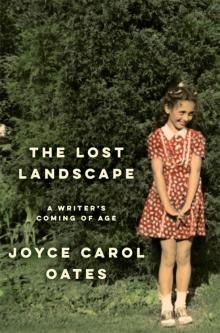 The Lost Landscape: A Writer's Coming of Age
The Lost Landscape: A Writer's Coming of Age Evil Eye: Four Novellas of Love Gone Wrong
Evil Eye: Four Novellas of Love Gone Wrong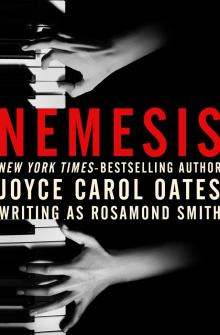 Nemesis
Nemesis Beautiful Days: Stories
Beautiful Days: Stories On Boxing
On Boxing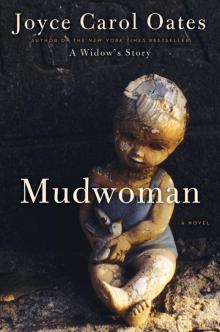 Mudwoman
Mudwoman Hazards of Time Travel
Hazards of Time Travel Night-Gaunts and Other Tales of Suspense
Night-Gaunts and Other Tales of Suspense Mysteries of Winterthurn
Mysteries of Winterthurn New Jersey Noir
New Jersey Noir Sourland
Sourland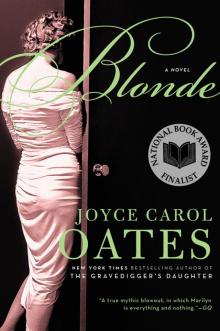 Blonde
Blonde The Corn Maiden: And Other Nightmares
The Corn Maiden: And Other Nightmares The Oxford Book of American Short Stories
The Oxford Book of American Short Stories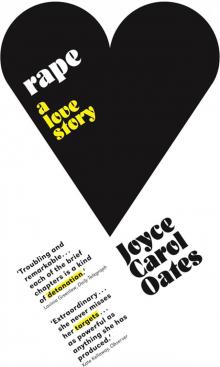 Rape: A Love Story
Rape: A Love Story Lovely, Dark, Deep: Stories
Lovely, Dark, Deep: Stories After the Wreck, I Picked Myself Up, Spread My Wings, and Flew Away
After the Wreck, I Picked Myself Up, Spread My Wings, and Flew Away Freaky Green Eyes
Freaky Green Eyes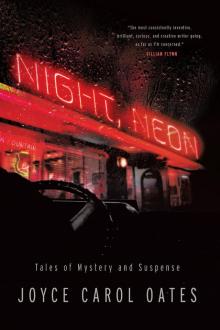 Night, Neon
Night, Neon I Am No One You Know: And Other Stories
I Am No One You Know: And Other Stories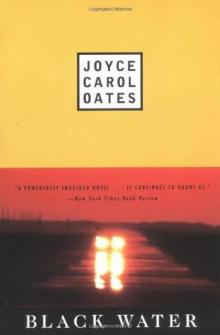 Black Water
Black Water Expensive People
Expensive People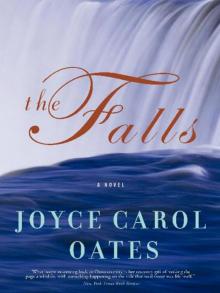 The Falls
The Falls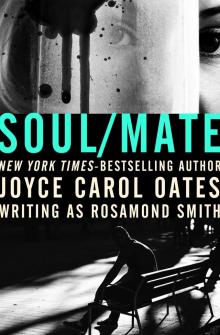 Soul/Mate
Soul/Mate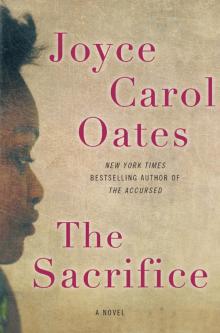 The Sacrifice
The Sacrifice The (Other) You
The (Other) You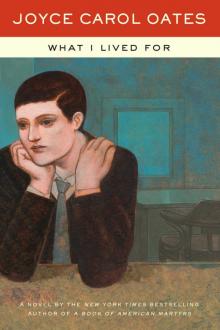 What I Lived For
What I Lived For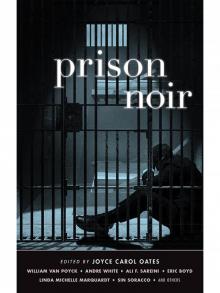 Prison Noir
Prison Noir High Crime Area: Tales of Darkness and Dread
High Crime Area: Tales of Darkness and Dread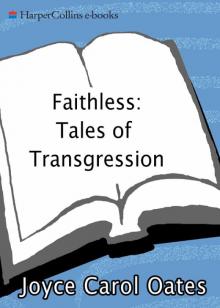 Faithless: Tales of Transgression
Faithless: Tales of Transgression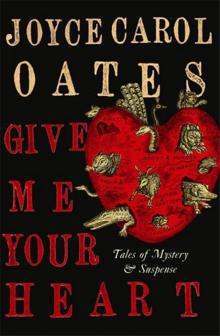 Give Me Your Heart: Tales of Mystery and Suspense
Give Me Your Heart: Tales of Mystery and Suspense The Rescuer
The Rescuer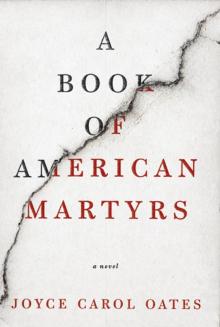 A Book of American Martyrs
A Book of American Martyrs American Melancholy
American Melancholy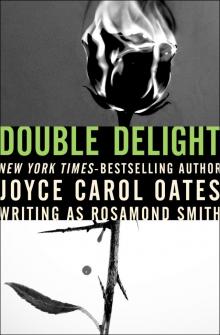 Double Delight
Double Delight Big Mouth Ugly Girl
Big Mouth Ugly Girl Bellefleur
Bellefleur Solstice
Solstice Big Mouth & Ugly Girl
Big Mouth & Ugly Girl Evil Eye
Evil Eye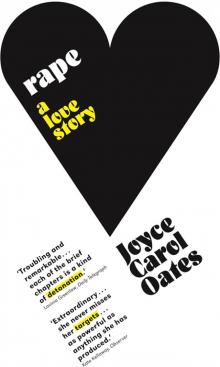 Rape
Rape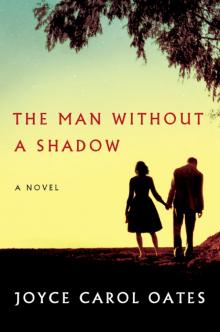 The Man Without a Shadow
The Man Without a Shadow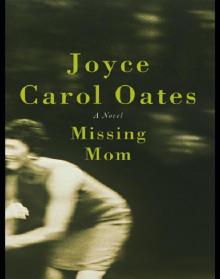 Missing Mom
Missing Mom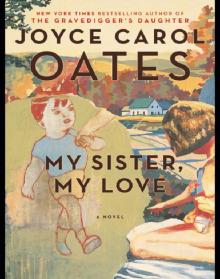 My Sister, My Love
My Sister, My Love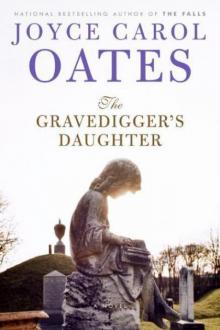 The Gravedigger's Daughter
The Gravedigger's Daughter Beautiful Days
Beautiful Days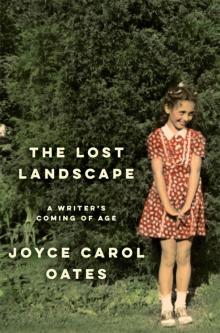 The Lost Landscape
The Lost Landscape Daddy Love
Daddy Love Dreams from the Witch House: Female Voices of Lovecraftian Horror
Dreams from the Witch House: Female Voices of Lovecraftian Horror The Tattooed Girl
The Tattooed Girl Give Me Your Heart
Give Me Your Heart In Rough Country
In Rough Country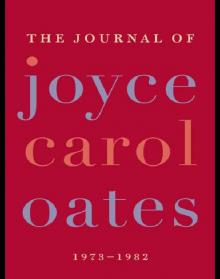 The Journal of Joyce Carol Oates
The Journal of Joyce Carol Oates Black Dahlia & White Rose: Stories
Black Dahlia & White Rose: Stories High Crime Area
High Crime Area Lovely, Dark, Deep
Lovely, Dark, Deep A Widow's Story
A Widow's Story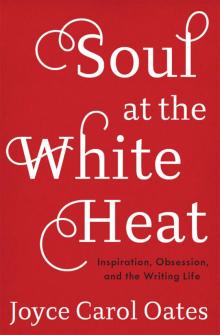 Soul at the White Heat
Soul at the White Heat Wild Nights!
Wild Nights!